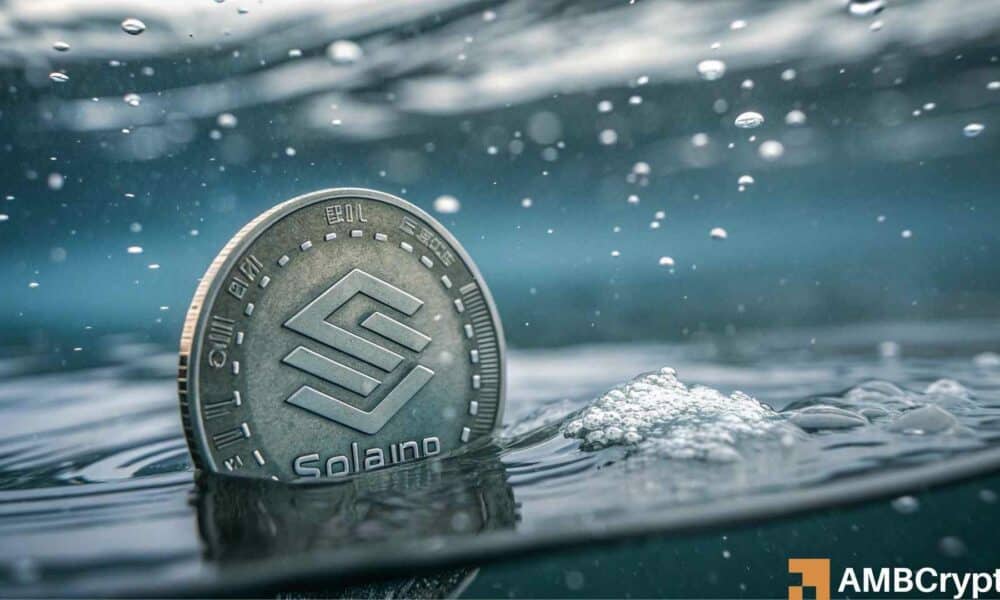The Influence of Memecoins on Solana’s Decline and Future Prospects
Solana’s Current Position
Solana’s price performance in recent months has been a topic of considerable debate, particularly regarding its recent drop from a peak of $253 to around $150. This represents a staggering 38% decline, and if compared to its all-time high of $295, the altcoin is down by approximately 47%. Analysts suggest that this decline isn’t merely a reflection of broader market sentiment but rather a specific struggle faced by Solana, primarily influenced by the rise and fall of memecoins in the crypto landscape. Speculatively, traders are pricing in only an 11% chance for SOL to reclaim the $200 mark and a mere 2% for it to surge to $250 by the end of November, indicating a cautious mood among investors.
Memecoins: A Double-Edged Sword
The relationship between memecoins and Solana is complex. In early 2025, Solana saw a meteoric rise attributed to the launch of the Official Trump memecoin, which sparked significant interest and activity on the platform. However, this surge has revealed a broader reliance on memecoins for Solana’s on-chain activity. Data suggests that a staggering 41% of Solana’s App Revenue is currently derived from memecoins. This situation has raised concerns because it indicates that the chain’s ecosystem is driven more by speculative hype rather than sustainable utility, which could be detrimental to its long-term health.
Erosion of Memecoin Momentum
Recent trends show a noticeable contraction in the momentum surrounding memecoins since late 2024. This decline has been acknowledged by several analysts, including Flood, who argues that fading memecoin enthusiasm plays a significant role in Solana’s current struggles. The initial euphoria surrounding these digital assets, while it may have bolstered Solana’s visibility, is now waning. As their influence diminishes, so does the financial support they provide to the Solana network, leaving it vulnerable to broader market weaknesses.
Solana’s Tokenized Stock Ventures
Despite challenges related to memecoins, Solana has made notable strides in the realm of Internet Capital Markets. While Ethereum still dominates smart contract functionalities, especially in tokenized assets like stocks, Solana is quickly establishing itself as a leader in tokenized stock offerings. However, this progress has yet to translate into significant activity beneficial for SOL’s price. The tokenized markets, including bonds and ETFs, still favor Ethereum, raising questions about Solana’s long-term viability if it cannot effectively capitalize on its recent successes.
Pressures from Alameda’s Unlock
Adding to Solana’s strain is the recent activity from Alameda Research, which has implications for market dynamics. As part of its strategy to repay FTX victims, Alameda executed a monthly unlock, resulting in the sale of 193,000 SOL tokens—valued at around $30 million. This decision has generated almost four times the potential selling pressure that institutions would need to absorb. Following this action, Solana experienced $118 million in inflows last week. However, current market conditions and institutional momentum appear insufficient to drive significant recovery for SOL’s price.
Market Sentiment and Future Outlook
The outlook for Solana in the short term appears grim, given market sentiment surrounding its price trajectory. The options market reflects this cautious sentiment, with traders pricing an 11% chance for SOL to reach $200 and only a 2% chance for a jump to $250 before the end of November. This skepticism illustrates the broader concerns surrounding Solana’s dependency on memecoins and its struggle against a backdrop of increasing competition and market weakness. Moving forward, for Solana to assert itself more robustly in the crypto marketplace, it will need to diversify beyond memecoins, capitalize on new projects, and regain investor confidence.
Conclusion
In essence, while Solana has established itself at the forefront of innovation within the blockchain space—particularly in tokenized assets—the dependency on memecoins could be its Achilles’ heel. As the memecoin hype fades, a more sustainable approach will be essential for the platform’s long-term viability. Investors remain cautious as they assess Solana’s potential for recovery amidst looming pressures from both the market and external factors such as Alameda Research’s actions. Whether Solana can emerge stronger in the current climate will depend on its ability to pivot toward real utility and foster investor trust in its ecosystem.


